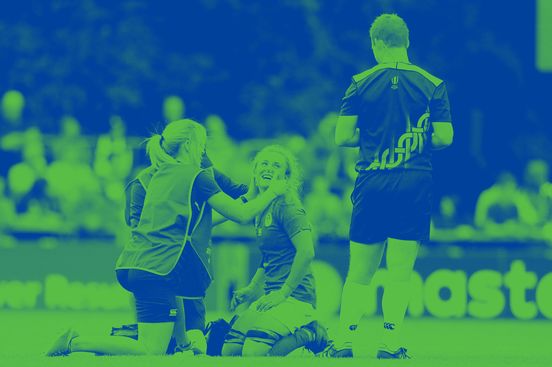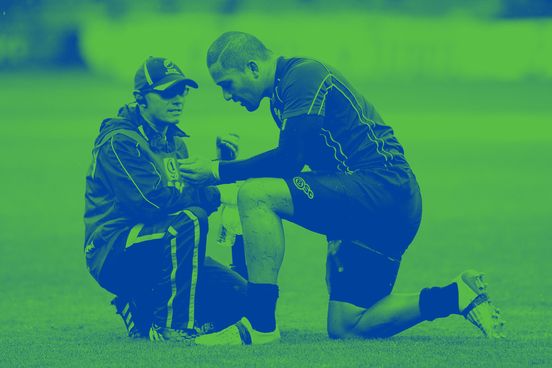Catastrophic Injury
Reporting Procedure for Rugby-related Catastrophic and Fatal Injuries
A rugby-related injury that should be considered as a potential ‘catastrophic injury’ for World Rugby reporting purposes includes:
- Spinal cord injuries with an ASIA classification at 48 hours of A to D
- Brain injuries with a Glasgow Coma Scale (GCS) at 48 hours of ≤12 (i.e. graded as ‘moderate’ or ‘severe’)
- Fatalities (including spinal cord, traumatic brain, and cardiac-related fatalities)
Criteria for an injury to be retained on the World Rugby database and considered as a catastrophic injury include:
- Spinal cord injuries with an ASIA classification at 12 months of A to D
- Traumatic brain injuries with a Glasgow Outcome Scale (GOS) at 12 months of 1 to 3
- Fatalities resulting from any rugby match or training activity.
(See Appendix A for definitions of the ASIA, GCS and GOS scales).
The reporting procedure for catastrophic injuries has been updated as of November 2022. All Unions must now report catastrophic injuries to World Rugby via the Online Catastrophic Injury Reporting System located at https://iss.world.rugby/, which replaces the paper-based report forms. Each Union Chief Medical Officer may nominate catastrophic injury reporters to input information into the online system by contacting research@worldrugby.org to request access.
In the first instance, a representative of the National Rugby Union must report a catastrophic injury to World Rugby as soon as possible, but at most 8 weeks after the event. The information required for the catastrophic injury report should be completed with input from the injured player (if possible), family members, and witnesses to the incident.
At or as soon as possible after 12 months (or immediately after the death of a player), a representative of the National Rugby Union must complete the follow-up report, this report should be completed by or with input from an appropriate medical specialist.
Appendix A: Definitions of ASIA, GCS and GOS scales
1. ASIA (American Spinal Injury Association): Standard neurological classification of spinal cord injury
The full scoring system and chart are available at the following web site: www.asia-spinalinjury.org/publications/2006_Classif_worksheet.pdf
Final grading of impairment is summarised as:
A = Complete: No motor or sensory function is preserved in the sacral segments S4-S5.
B = Incomplete: Sensory but not motor function is preserved below the neurological level and includes the sacral segments S4-S5.
C = Incomplete: Motor function is preserved below the neurological level, and more than half of key muscles below the neurological level have a muscle grade less than 3.
D = Incomplete: Motor function is preserved below the neurological level, and at least half of key muscles below the neurological level have a muscle grade of 3 or more.
E = Normal: Motor and sensory function are normal.
2. GCS (Glasgow Coma Scale): Assessment of coma and impaired consciousness
A description of the GCS is available in Teasdale G and Jennett B. Assessment of coma and impaired consciousness. A practical scale. Lancet. 1974 Jul 13;2(7872):81-4.
The GCS is composed of 3 sub-scales, each scored from 1 (worst) to 5 (best):
- Best eye response
- Best verbal response
- Best motor response
Each aspect of performance should be considered and reported but the sum of the scores provides an overview of the brain injury:
Severe: GCS ≤ 8
Moderate: GCS 9 to 12
Minor: GCS ≥ 13.
3. GOS (Glasgow Outcome Scale): Assessment of coma and impaired consciousness
A description of the GOS is available in Jennett B and Bond M. Assessment of outcome after severe brain damage. Lancet 1975 Mar 1;1(7905):480-4.
Dead
Vegetative state: Unable to interact with environment; unresponsive
Severe disability: Able to follow commands/ unable to live independently
Moderate disability: Able to live independently; unable to return to work or school
Good recovery: Able to return to work or school
Appendix B: Descriptions of tackle types
| Arm |
Tackler impedes/stops ball carrier using the upper limb(s) |
 |
| Collision |
Tackler deliberately impedes/stops the ball carrier without using the arm(s) |
 |
| Jersey |
Tackler holds the ball carrier’s jersey |
 |
| Lift |
Tackler raises the ball carrier’s hips above the ball carrier’s head |
 |
| Shoulder |
Tackler impedes/stops the ball carrier with his/her shoulder as the first point of contact followed by use of the arm(s) |
 |
| Smother |
Tackler uses the chest and wraps both arms around the ball carrier |
 |
| Tap |
Tackler trips the ball carrier with his/her hand on the lower limb below the knee |
 |
Information taken from: Fuller et al. Injury risks associated with tackling in rugby union. British Journal of Sports Medicine 2010; 44: 159-167.






